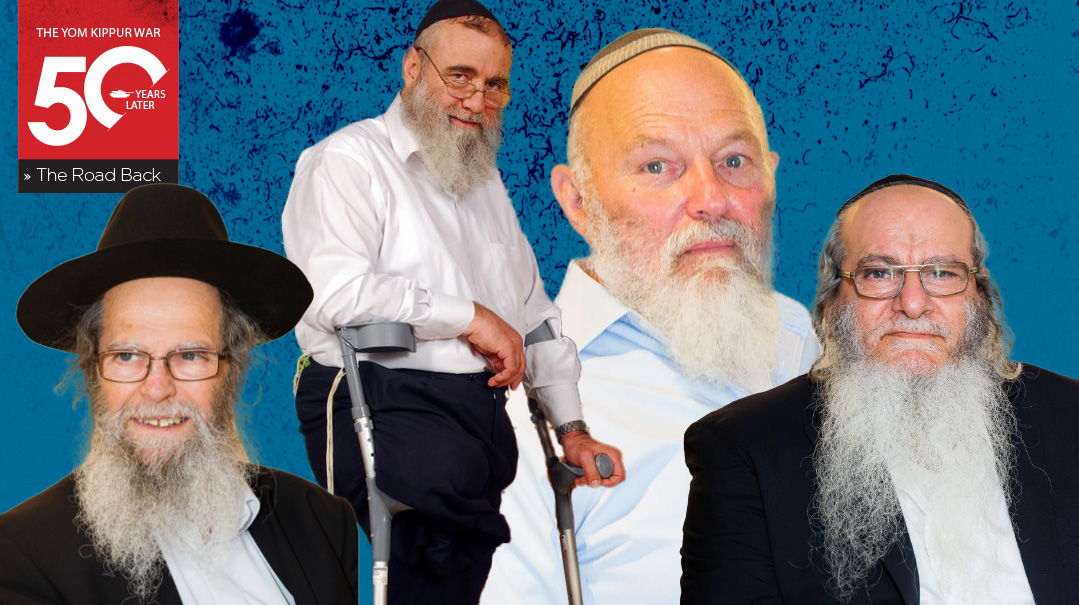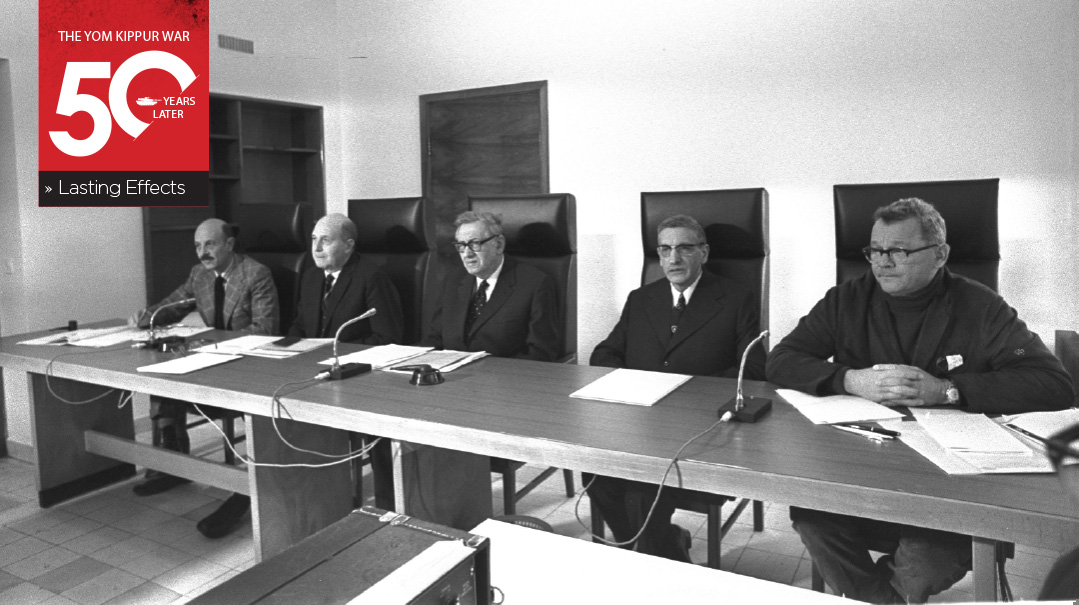Tears and Tehillim

As sirens wailed, soldiers mobilized, and an entire nation was gripped by fear, how did the Torah world’s leaders respond?
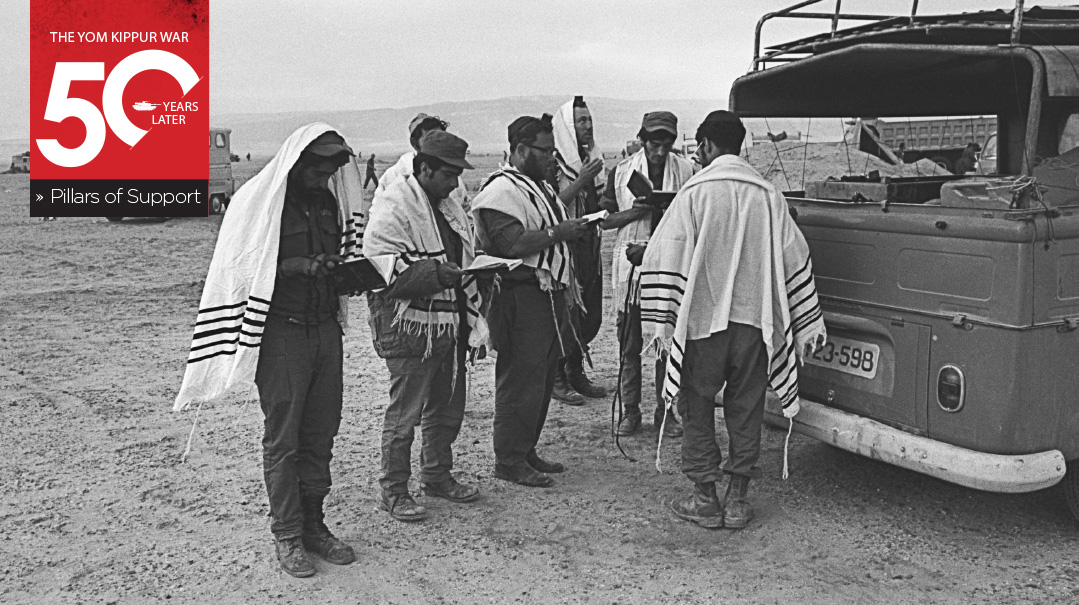
That Which I Feared
» The Beis Yisrael of Gur
The Gerrer shul on Rechov Ralbach was packed that Yom Kippur day. Mussaf had just concluded, and most of the chassidim were still there during the break before Minchah. Suddenly, a siren sounded, and the Rebbe emerged from his inner chamber (called the “cabinet”), his face pale as a sheet. He said just three words: “Asher yagorti ba, that which I feared has come to pass.”
Ever since the Six Day War, the Beis Yisrael had lived with palpable angst. In the euphoria following Israel’s swift victory, it had seemed enigmatic — but now everyone understood the reason for his unrest.
As Gerrer chassidim got called up to report to the front, they filed into the beis medrash to receive his farewell (known as “gezengen’n”) — but he would not disrupt the davening. Some waited until after Yom Tov, refusing to leave until they received his brachah. All who received a brachah merited to return home.
Throughout the following weeks, the Rebbe was visibly tense. He constantly asked for updates and kept expressing his concern and davening for the “Yiddishe zelner,” the Jewish soldiers at the front. He was particularly worried for those stationed on the northern front, where he knew the cold could penetrate one’s bones.

Did You Eat?
» The Yeshuos Moshe of Vizhnitz
The Yeshuos Moshe of Vizhnitz was immersed in the “heyei im pipiyos” chazzan’s introduction to Mussaf when the siren sounded in Bnei Brak. Soon enough, several chassidim received call-up notices. What to do?
The Rebbe’s gabbai told Rav Katriel Stein not to leave yet, but he wasn’t quite sure whether that was the proper course of action. So he approached the Rebbe himself after Mussaf and asked whether to report in the midst of the holy day.
The Rebbe faced him and said, “I just said, ‘He who blessed His nation with peace.’ ”
The meaning was clear — it was not yet time to travel to the front.
After Yom Kippur was over, Reb Katriel visited the Rebbe’s home, already dressed in weekday clothing and packed up to join his battalion. “Did you eat anything?” the Rebbe asked, his concern evident.
“Yes, a bit — who can eat now?”
“Eat something,” the Rebbe said, pouring a cup of beer as he spoke. Then he pulled on Reb Katriel’s clothing and urged him to sit, saying, “There’s no need to hurry, you mustn’t hurry.” He then bentshed him and reminded him once more not to hurry.
Reb Katriel set out for the meeting point, remembering not to speed, as his Rebbe had commanded. When he reached his destination, he was informed that his battalion had already been dispatched to Sinai, and he would be reassigned to a different group.
It wasn’t long before he learned the bitter news: The first battalion had been ambushed by the Egyptians, and the tank he would have been assigned to had gone up in flames, with not a single survivor.
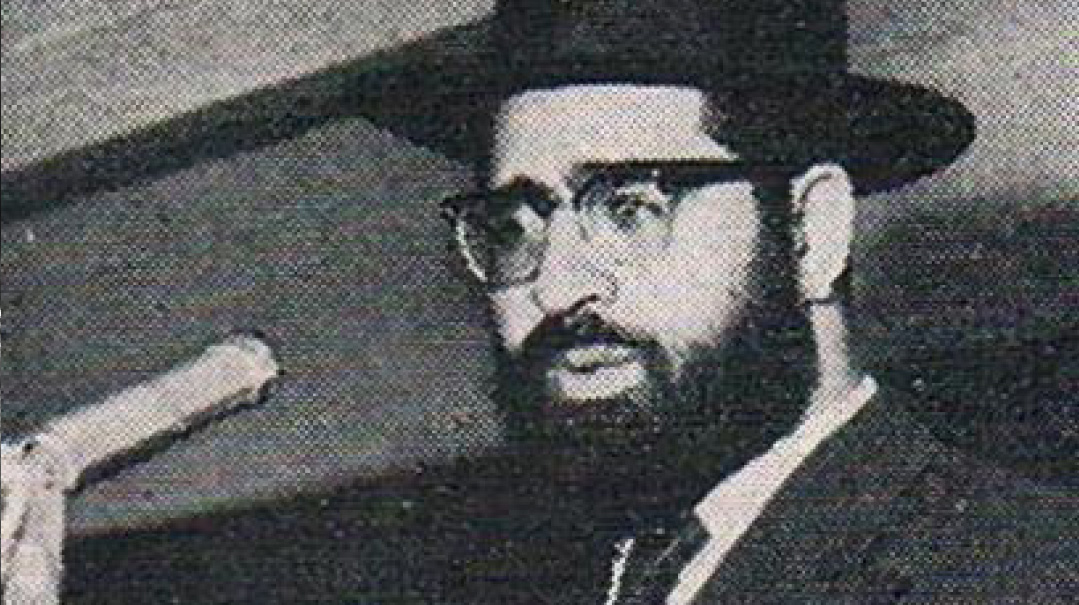
Name by Holy Name
» Rav Ovadiah Yosef
INthe aftermath of the Yom Kippur War, Rav Ovadiah Yosef was tasked with the delicate job of determining the fate of the agunos whose husbands had never returned from the front. His son, Rav David Yosef, remembers the agonizing process that overtook their home.
Day after day, Rav Ovadiah would listen to shattering testimonies and examine photos of burnt tanks. More than six months after the war’s conclusion, he was still consumed by the agunos.
“Abba would spend hours on end cloistered with members of the military brass, going through the lists, name by holy name,” he remembers. “Every day, our home was filled with investigators who helped extract testimony from the witnesses. As Abba went through each case, writing individual rulings for each woman that detailed the evidence he’d received and whether it was sufficient, we children began to understand the terrible toll of the war.”
But perhaps the most piercing realization of all came at the end of the day, when the military men went home. “That’s when Abba would go into his room and close the door — and we’d hear him cry and cry.”

A Victory March in Tears
» The Lubavitcher Rebbe
Wrapped in his kittel and tallis, the Lubavitcher Rebbe entered his Crown Heights beis medrash at 10 a.m. that Yom Kippur morning. Rumors of the war had reached New York, even though it was Yom Kippur, and his secretary Rabbi Yehuda Leib Groner approached him and whispered, “A war has broken out in Eretz Yisrael.”
“Ich veis, I know,” said the Rebbe in a decisive tone as he continued walking toward his seat. He proceeded to daven without any unusual mannerisms, his face inscrutable as always. Shacharis, Mussaf, and Minchah were just like any year. But during Ne’ilah, the Rebbe’s inner turmoil began to creep across his face; he looked noticeably anxious.
The real drama began as davening ended. The tradition in Lubavitch is to sing the triumphant niggun known as “Napoleon’s March” at the conclusion of Ne’ilah in an outpouring of joy and confidence. Every year, the Rebbe would climb onto a chair and conduct the chassidim with his hands, as they sang and danced to the rhythm of his ebullient motions.
This time, the assembled began to sing, as usual. The Rebbe climbed onto his chair, as usual. But then he covered his face with his tallis and his shoulders began to shake. Try as he might, he couldn’t hide the tears that began pouring down his face. The tears slipped out from under the tallis, ran down his beard, and left patches of angst all over his kittle. No one who was in the room can ever forget the sight of the Rebbe standing on the red-velvet chair, faced shrouded by his tallis, his body shaking from the intensity of his cries.
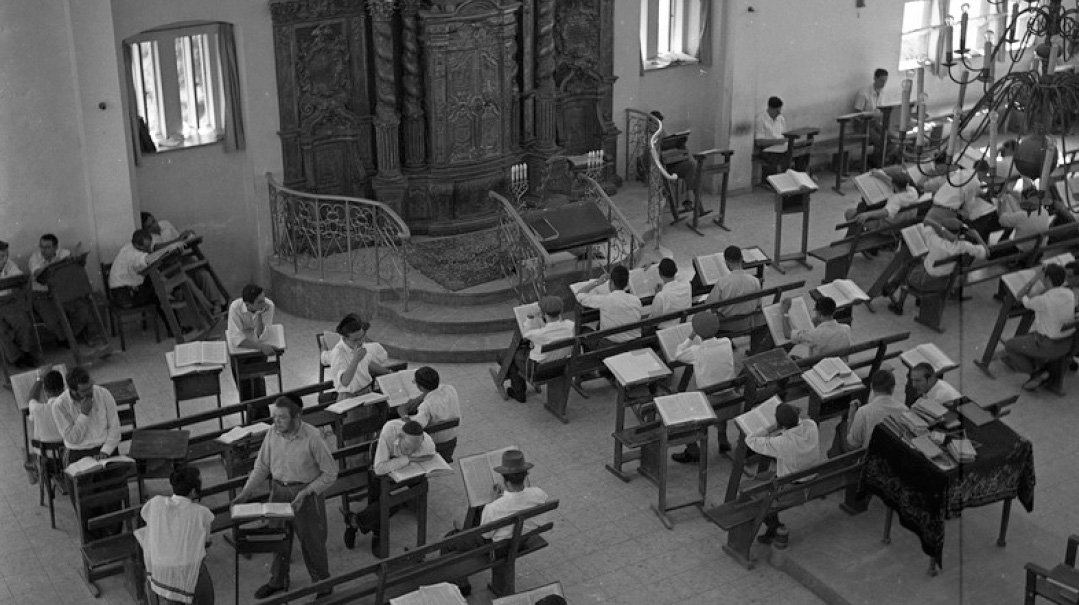
The Longest Elul Zeman
» Yeshivos Ponevezh and Porat Yosef
Usually, Motzaei Yom Kippur is the beginning of the bein hazmanim break, but as Bnei Brak’s streets filled with armored vehicles, roshei yeshivah Rav Elazar Menachem Shach, Rav Dovid Povarsky, and Rav Shmuel Rosovsky, along with mashgiach Rav Yechezkel Levenstein, decided that the bochurim should not return home. They had their own vital role to play: They would all stay in yeshivah and learn with increased diligence, filling shifts around the clock in the heichal with its blacked-out windows.
During that extended Elul zeman, Rav Dovid Povarsky ztz”l would constantly remind them of the importance of feeling their fellow Jews’ pain. There was no way they could sleep on a comfortable bed while Jewish soldiers were sleeping in trenches and bunkers, facing constant threats to their lives. And there was no way they could feel the usual joy of Succos while so many families were sitting shivah.
The yeshivah erected several large succahs on the campus. The bochurim celebrated Simchas Torah, but it was a very serious Yom Tov, like none they’d ever before experienced. That year, Elul zeman extended straight into the winter, with no breaks.
The same decision was taken in Yeshivat Porat Yosef: the roshei yeshivah Rav Shalom Cohen and Rav Shimon Baadani had all the boys stay in yeshivah — which was located in Jerusalem’s Katamon neighborhood at the time — throughout the bein hazmanim period.
They built succahs in the yeshivah yard and continued to learn not just the three usual sedorim, but also additional sedorim throughout the 24 hours of the day.
Everyone felt a personal responsibility to learn, daven, and say more Tehillim than usual.
Seize the Holy Day
» The Toldos Aharon Rebbe
News of the war reached the Toldos Aharon beis medrash with the sirens midday, but the Divrei Emunah was so absorbed in his tefillos that it wasn’t until he stepped back after his Shemoneh Esreh that he noticed the noise.
Before Ne’ilah, he addressed his kehillah — the only time he ever did so on Yom Kippur — and cried aloud that they had to arouse Divine mercy. “The war was intended from Above for this specific day, as a message that we hold the ability to annul all the terrible decrees. You must seize this holy day to beg for the Redemption.”
That year most communities canceled their traditional Simchas Beis Hashoeivah celebrations and held public recitations of Tehillim instead.
But the Rebbe instructed his chassidim to hold a Simchas Beis Hashoeivah — not despite the war, but because of it. “The simchah of this day has the power to sweeten the din,” he explained. And while many spent time in their shelters, he told his kehillah that the flimsy succah is a Jew’s safest refuge.
(Originally featured in Mishpacha, Issue 980)
Oops! We could not locate your form.


